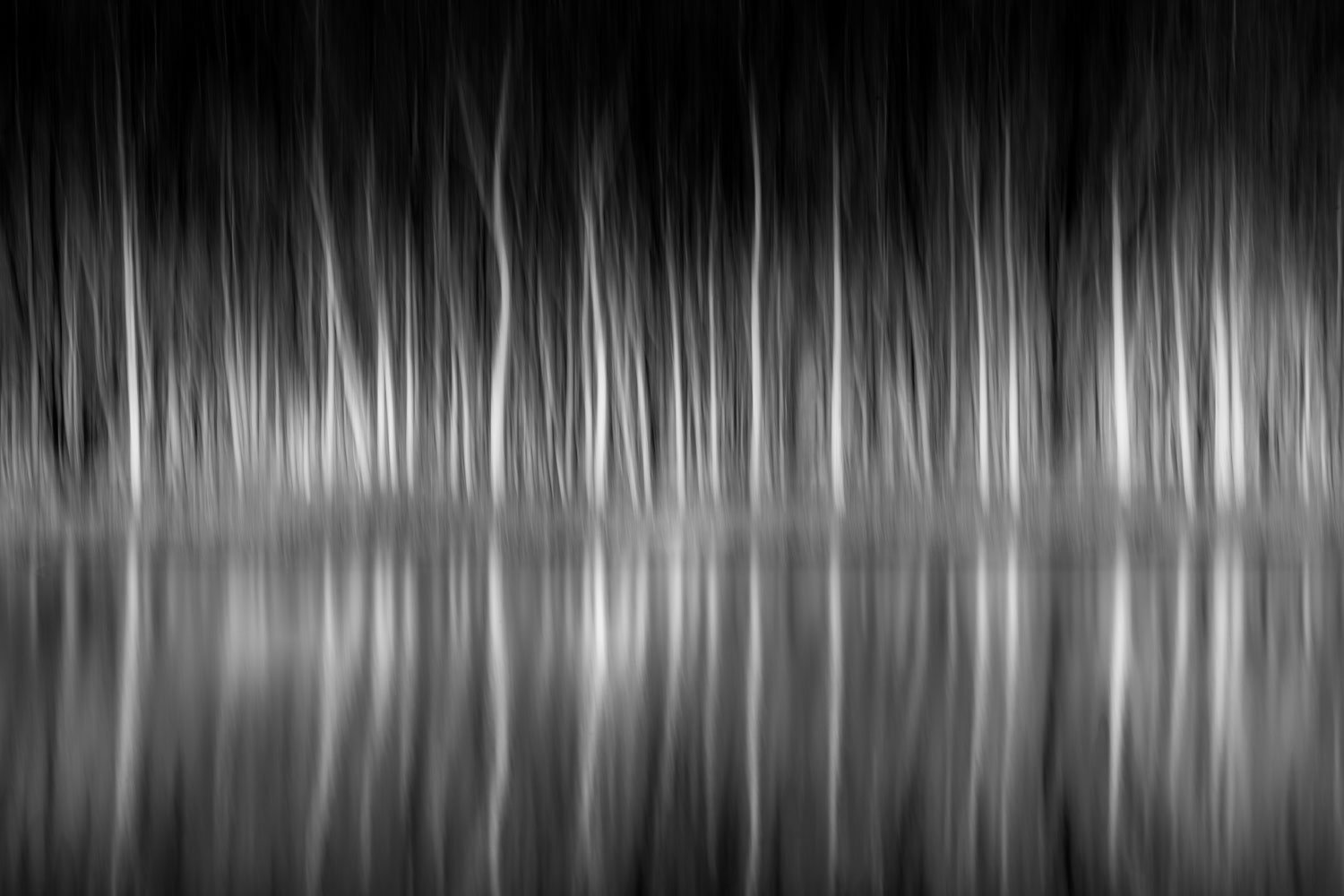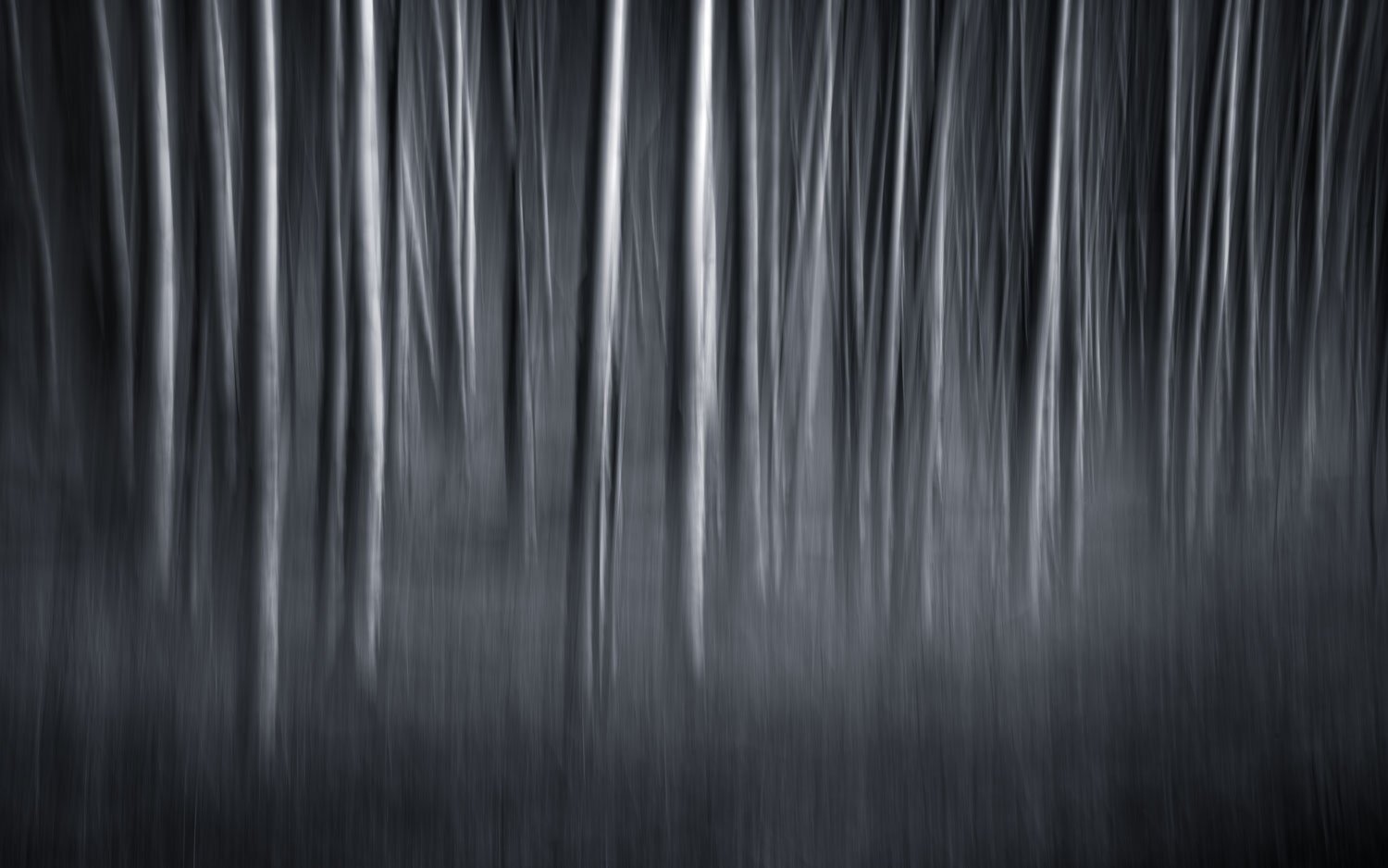How ICM Photography Affects My Creativity
This article was originally published on Nature Photographers Network (NPN) in June 2022. I have made a few updates and included new images. If you have any questions, please leave a comment. I would love to hear from you.
My photographic approach is focused on seeking the experience of discovery. I learned about this approach from Guy Tal and William Neill, both of whom I consider masters. What does the experience of discovery mean and how does it relate to Intentional Camera Movement (ICM) photography? To me it means going out into nature with no expectations. It means being open to the subtle and not so subtle beauty that nature presents. It means slowing down and observing the light, shapes, lines, color, and textures around you to create images that express you and your life experiences. With ICM, the experience of discovery takes on another dimension. ICM opens up new creative possibilities through experimentation and the freedom inherit with the technique. With the camera and lens as my tools, I can add motion as another design element which expands my visual vocabulary to help create more expressive images. ICM allows me the freedom to use my camera in different ways, and I enjoy the endless creative possibilities.
For those who are unaware, Intentional Camera Movement (ICM) photography is a photographic technique where you combine a slow shutter speed with the movement of the camera to achieve a result that can be both unique and creative.
Now, I’ll admit that ICM has gained in popularity recently, and the technique can become repetitive if overdone. It’s an easy trap to fall into where the focus is solely on technique; however, if we use the technique to help tell the story about a place or communicate how we felt about a scene, then I think that it is worth pursuing.
I use ICM to convey a certain mood in an image depending on how I interpret a given scene. For example, in this image I wanted to express a soft painterly look to emphasize the warm colors in the grasses and reinforce the geometric shapes of the three primary trees.
When I found this scene of a young Colorado aspen tree, the vibrant Autumn colors jumped out at me. Through the use of motion, I wanted to portray the trees being on fire hence the Spanish title.
When I was driving into my local state park, I immediately noticed the long shadows cast from the trees from the early morning light. How would I go about capturing such a busy scene as the light poured around the trees? Intentional Camera Movement was useful to simplify this complex scene, to showcase the interaction of light and shadow, and to arrive at this abstract and ethereal final image. The elements I wanted to portray included the diagonal lines intersecting with the vertical lines from the trees, alternating light and shadow, and motion using ICM.
ICM photography also opens up creative possibilities without needing to travel far to exotic locations. There are countless options within your local area to create unique images. An ordinary stream can serve as your canvas to create something beautiful through ICM. At 1/8 second and camera movement from right to left at a quick pace, I was able to photograph this ICM abstract of water cascades. Streaks of highlights dance above waves; a playful dance between light, shadow, color, and pattern. The elements moved with supreme skill and graceful fluidity.
Color ICM certainly helps to abstract a scene from reality, but I am finding that monochrome helps to reveal the structure and emotion of the scene that captured my imagination in the first place. The structure of the barren trees really come to life through motion with black and white editing. The following two photographs also convey a sense of mystery (and perhaps fear and apprehension) that comes from walking alone in the woods in the dark.
I used ICM and creative color grading to give the photograph below a darker, more mysterious feel. You will see a common pattern with my ICM images, and that is primarily trees. I love their structure and how their shapes get accentuated through camera movement.
In the image of trees below, I used ICM to simplify the scene and help tell the story of separation. Each grouping of trees stand together yet there is empty space between them. It is an image depicting isolation as well. I enjoy using ICM to express elements of the human condition: emotion, conflict, fear, mortality.
The creation of illusion and the prompting of questions is also a beneficial aspect of Intentional Camera Movement photography. Is the image above, titled “Eye of the Storm,” an aerial photograph recorded over a storm or from a stream?
I love photographing the flow of water combined with ICM. Nature often has a way of surprising me and I love to interpret scenes like this in my own way. This image titled “Fallen Angel” is an angel cast aside, fallen from grace.
ICM is a free-form way to photograph the natural world. I am able to be playful with my compositions. Below is a photograph, using the ICM technique, of a forest in winter. By flipping the image, it appears more like a reflection. I love being surprised when reviewing a series of ICM images of a scene. You just never truly know how a scene will be rendered through camera motion.
A childlike curiosity and exploration are key drivers to my photography. ICM photography helps me explore possibilities not clearly seen by my eyes but gets me closer to what my mind’s eye sees. It allows me to push the scene further into abstraction and better tell a story or convey a mood. To take that a step further, and to really unlock my creativity, I began experimenting in the digital darkroom using multiple exposure blending with ICM. Most cameras allow you to capture a series of images and blend them in camera, but my Sony cameras do not have that feature, so I employ a hybrid approach. I capture my images in the field and then combine them in Photoshop. This exercise of experimentation has been a great creative outlet for me.
The first photo montage in this project using a base ICM image is below, titled “A World On Fire”. The base ICM image is from a local woodland where I photographed some ponderosa pine trees. In the editing phase, I combined another image photographed from a different trip to create this final piece, where I try to express the destruction of our natural world.
The second image, below, is called “Eternal Hanami” and was created in Photoshop using three separate images. The base image of the trees was an ICM shot captured in the field on a frozen lake. I used a separate, colorful reflection to add some texture in the ice at the lower half of the image. The third image was of fall foliage and was used on the top part of the frame. I also used it at the very bottom to help unify that part of the image with the top. Blend modes, careful masking, patience, and time were essential to creating this tranquil scene which reflects my love for Japanese art and culture.
The third image I want to share that illustrates how I use ICM to drive my creativity is titled “Close The Window”. This one reminds of a silky veil dancing in the wind, or perhaps an ornate curtain at the ballet. Like the other two images, this one starts with a base ICM image and then I blended in separate images to achieve the final result. The motion-like quality in this one was just a happy accident. It was a byproduct of tinkering and a reflection of my imagination.
Finally, here is a photo montage showing my interpretation of that time period between the end of Summer and early Autumn. The last of the wildflowers hold on in a carpet of green foliage. The trees provide a harbinger of the Fall season ahead where leaves drop as the temperatures dip. It's that in-between period where you can get away with shorts and a light shirt before needing to layer up.
For this final image, I combined an ICM image of trees with an image of wildflowers from the same local woodland. I was in a meditative state both in the field observing nature and back on my computer putting the pieces together for this image.
It is through ICM that I can take chances, to experiment, and to express my own voice. I encourage you to try ICM, to explore, and see what results you get. You can also check out my other ICM article which covers some of the basics of the applying ICM techniques in the field. If you have any questions or comments, please let me know.















